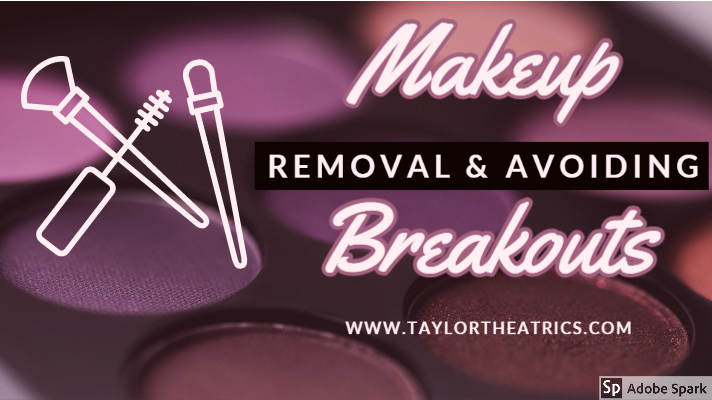
Allergies?
Most makeup is hypoallergenic. In fact, very few individuals are actually allergic to makeup. If you are going to have an allergic reaction, possible symptoms (itching, excessive warmth, hives) will appear within five to thirty minutes. Reactions appearing 24 hours later, are a separate reaction. Reactions occurring upon removal may be the direct result of the process or product used for makeup removal.
Breakouts
The two main reasons that we break out when we wear stage makeup are improper makeup removal as described above and sharing makeup using unsanitary methods. One example of an unsanitary method is reusing personal sponges and other utensils such as makeup pots and/or brushes that have been improperly cleaned. Another is keeping makeup for prolonged periods of time, especially after having been ill.
Keep a Routine
A routine is whatever you do or don’t do daily. Your body creates the exact amount of oil based on your routine. Using makeup wipes to take off make up can be rough on skin, kind of like scraping your face with wood, ugh! They can often remove your natural oils and dry out your skin. We can’t live three to four days without water, and our skin is similar when it comes to oil. Whatever we do or don’t do daily when we wash our faces, our bodies create the exact amount of oil for that. If we zestfully remove more than usual, our bodies will try to replace that oil. When we do this again and again, our bodies go into panic mode and sometimes over create oil trying to replace what has been lost, thus causing a breakout.
Instead, try following these five simple steps to remove stage makeup. It will also work well for a day to day skin care routine.
- Remove: Use a cold cream such as QUEEN HELENE Professional Cleansing Cream, Triple Whipped. Gently massage into the makeup and let the remover do the work. If you take time with this step (2-5 minutes), the rest will be easy).
- Wipe with a soft cloth, NO WATER, to take the bulk of the makeup off.
Use a cleanser (whichever you want) – lather and gently wipe off with a wet wash cloth.
- Toning – Close pores (You can use cold water or a product like witch hazel.)
- Moisturize – Replace moisture with your favorite moisturizer
Keep It Clean

Have a makeup crew chief and two assistants in charge of all makeup distribution and clean up, while all others assist cast members. Have 91% rubbing alcohol on hand in a small spray bottle to sanitize makeup and makeup spatulas. 
disposable mascara wands and never re-dip a wand into the mascara.
Conclusion
Once you’ve developed a makeup removal routine, your oil production will normalize. While sharing may be caring, in the case of makeup, this is not always true. You can also rest assured knowing that you are keeping yourself safe by following these key tips. Breakouts will soon become a thing of the past! For other makeup tips and inspiration, see my article Theatrical Makeup Tips & Supplies.








